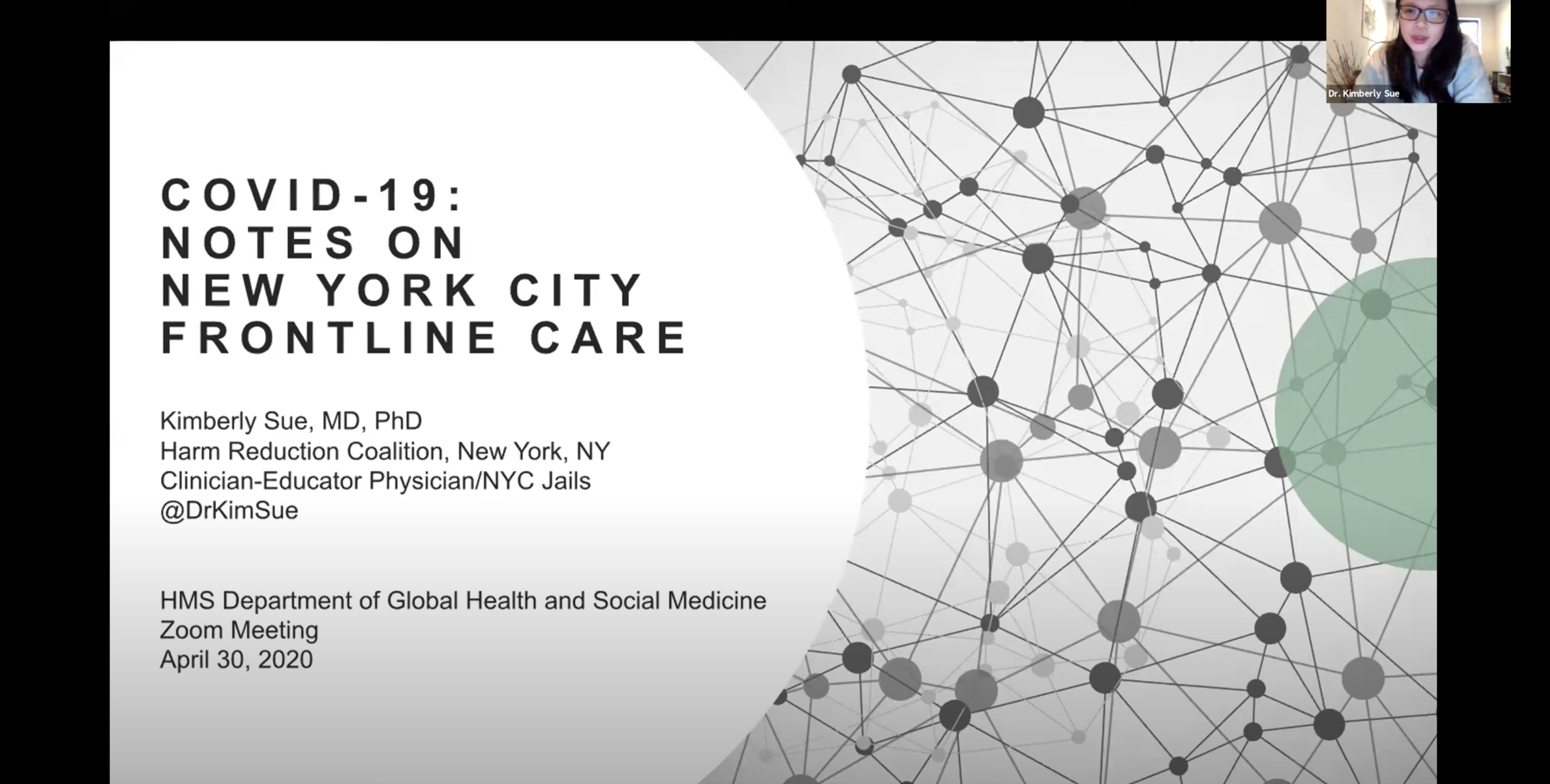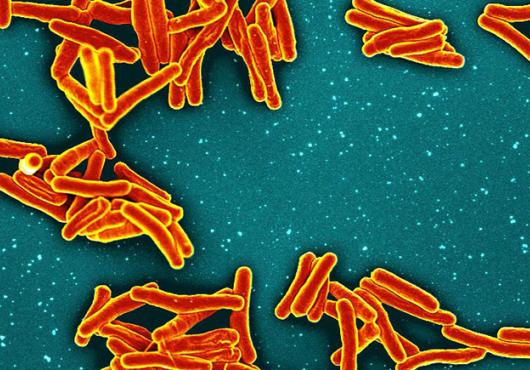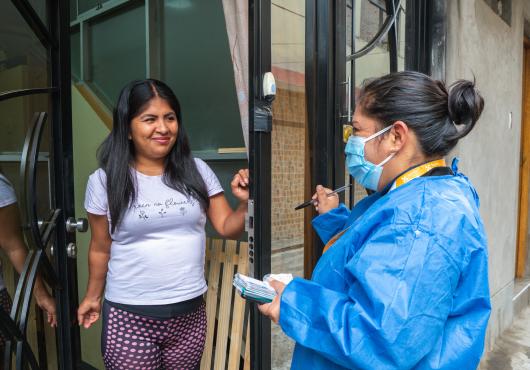
This article is part of Harvard Medical School’s >continuing coverage of medicine, biomedical research, medical education and policy related to the SARS-CoV-2 pandemic and the disease COVID-19.
The patient presented with a fever and multiple other COVID-19 symptoms that she had been experiencing for several weeks. She had gone to an emergency room when she first became ill, but left after hours of being ignored. She suspected that she didn’t receive care in the hospital because she is deaf and there was no one there at the time who could communicate with her in American Sign Language.
Now, the patient was calling the New York City coronavirus hotline because she wanted to self-isolate at home but had no way to get food without leaving her apartment. She wasn’t able to communicate with neighbors and her family lives far away.
“The idea of being able to isolate is really a privilege,” said Kimberly Sue, a physician-anthropologist and the medical director of the Harm Reduction Coalition, a national advocacy organization that promotes the health and dignity of individuals and communities affected by drug use, referring to the deaf woman’s case.
Sue spoke to the woman through an interpreter on New York City’s COVID-19 telephone helpline during the surge of cases there earlier this spring.
She shared the woman’s story and other observations derived from her experiences working in both a makeshift field hospital in Queens and in the Rikers Island jail health system earlier this year as one of the panelists on “The Varieties of Covid-19 Experiences,” a seminar hosted by the Harvard Medical School Department of Global Health and Social Medicine in the Blavatnik Institute and the Harvard University Department of Anthropology.
Panelists noted that the people at greatest risk of infection from coronavirus often live at the intersection of multiple forms of vulnerability and structural instability, living precarious lives balanced between chronic disease, mental health challenges, racism, poverty, substance use and trauma.
Understanding the details of a patient’s living conditions could be crucial to slowing the spread of infection and to ensuring good clinical outcomes, Sue said, citing patients who shared a one-bedroom apartment with seven other people, or who had to walk up many flights of stairs to their homes.
In the hospital, some patients would be recovering well breathing room air and sitting down or lying in bed, she noted, but their oxygen levels plummeted when they walked around the hallway. Sending them home too soon to attempt to climb the stairs could be dangerous.
These calculations become even more complicated when dealing with people who are incarcerated or experiencing homelessness, substance use disorders or mental health challenges, all in the context of overcrowding and limited resources, Sue said.
She and the other panelists said that they spent a good deal of time toggling between different clinical sites and other care delivery organizations, alternating in their roles as clinicians and critical observers in an effort to get a fuller understanding of how to best respond to the pandemic and find better ways to care for the sick and fight the illness.
Social medicine
The April 30 seminar was one of a series designed to explore how a social medicine perspective can help caregivers understand the social dynamics of COVID-19 and possibly guide the development of more effective responses to the virus.
The series has focused on anthropological, historical, economic and political forces that shape who is getting sick and who is dying from coronavirus infection. This particular seminar explored different perspectives from caregivers and patients who had a variety of experiences with COVID-19, with a focus on some of the populations hardest hit by the disease.
“The way we have handled coronavirus can only be considered a catastrophe,” said Arthur Kleinman, the Esther and Sidney Rabb Professor of Anthropology in the Harvard Faculty of Arts and Sciences, professor of medical anthropology in global health and social medicine and professor of psychiatry at HMS.
“The pandemic’s inequitable impact on the most vulnerable and lack of a coherent public health response illustrate the brokenness of society,” he said.
Kleinman emphasized that it was important to acknowledge that the frontline workers who are most at risk are not just health professionals, but also the “workers in the central valley of California who are producing our vegetables, and workers in the middle of America who produce our meat, not just the EMTs but the delivery people who make it possible for those of us who have the resources to really shelter at home in a way that’s not possible for those who are more vulnerable.”
For many, the place they call home is not a safe place to shelter, the panelists pointed out.
“Nursing homes were ground zero for the pandemic in the United States,” said Charles Pu, HMS assistant professor of medicine at Massachusetts General Hospital.
Pu gave several examples of early outbreaks across the U.S. in long-term care facilities, leading to a wave of infections in nursing homes with enormous costs in terms of mortality and personal trauma.
At the time of the seminar Pu said that 56 percent of all COVID-19 deaths in Massachusetts had happened in nursing homes, with 80 percent of facilities experiencing at least one coronavirus infection and most facilities reporting 10 or more. Overall, 1.7 percent of Massachusetts residents aged 80 or over died of COVID-19 in the first five months of the pandemic.
All of the health care system’s focus on surge capacity was on preparing hospitals and ICUs, Pu said. While hospitals and intensive care units were presented in the media and perceived by the public as being crucial to preventing a surge of coronavirus deaths, and statewide shelter in place advisories and other and massive efforts were undertaken to make sure hospitals weren’t overwhelmed or undersupplied, nursing homes did not receive similar support, he said.
“It was happening right in front of our eyes in the nursing homes,” Pu said. “They experienced the surge that everyone in society was trying to help prevent.”
Immigrants and children
At the other end of the age spectrum, Katherine Peeler, HMS instructor in pediatrics at Boston Children’s Hospital, shared her experiences working with refugee and immigrant children in federal custody and in the pediatric intensive care unit at Boston Children’s.
Peeler said it was important to understand the pandemic not just as a clinical condition or an epidemiological situation, but also as a state of mind.
Peeler works with immigrant children who live in shelters run by immigration authorities or by the U.S. Office of Refugee Resettlement. They are children who arrived in the U.S. alone or who have been separated from their parents, Peeler said, adding that they are already suffering from physical and mental trauma that they experienced growing up amid violence and deep poverty in their homelands, compounded by the traumatic experience of traveling to the U.S.
When they arrived in the U.S., they were placed in detention centers, held in custody without any familiar faces, in the middle of a global pandemic, she said.
In the early months of the outbreak, many of the children were required to travel to court hearings on crowded buses, she said. They weren’t given personal protective equipment, but they were surrounded by guards, court workers and caretakers who were wearing masks and gloves.
If the children became infected, they were placed in solitary isolation, which is not considered medically safe or humane for any child, let alone a child already suffering from multiple layers of trauma, according to Peeler.
She also highlighted the impact of social isolation on chronically ill high-school aged children who spent months in the pediatric intensive care unit without seeing friends or family members, and discussed the toll on the families and communities of those who died during the shutdown, when it was impossible for any but the closest family members to attend funerals.
Peeler also noted that there appeared to be an increase in the number of children who were attempting suicide during the pandemic, as evidenced by an increase in hospitalizations for ingestions and other attempts at self-harm.
Other panelists brought insights from their own personal experiences with the disease and from international and historical experience with other pandemics.
Edward Nardell, HMS professor of global health and social medicine, described his personal experiences upon being diagnosed with COVID-19. Nardell, 72, noted that in spite of his age he had a relatively mild case but that the initial diagnosis still caused great anxiety and uncertainty for himself and for his family, who feared he might not live to meet a new grandson. Nardell is also professor of medicine in the Brigham and Women’s Division of Global Health Equity and professor of environmental health in the Harvard T.H. Chan School of Public Health.
Eugene Richardson, assistant professor of global health and social medicine explored the parallels between COVID-19 and other pandemics, such as Ebola virus disease in West Africa.
Richardson, also assistant professor of medicine in the Division of Global Health Equity at Brigham and Women’s, said it was important to broaden the area of inquiry and the field of treatment to include social, economic, historical and anthropological methods, and to emphasize the importance of building equity and fighting injustice, not just as a moral imperative but as a way to improve universal health and well-being.
The coronavirus pandemic has generated a massive international response in part because it is afflicting people in richer countries and interfering with the global economy, Richardson said, while other diseases that ravage poorer countries, like Ebola virus disease, malaria and tuberculosis, are often ignored. The higher incidence of and mortality for coronavirus among immigrants, communities of color and the poor are evident even within the richest countries, like the U.S.
In addition to developing therapeutics and vaccines for COVID-19 and other infectious diseases, Richardson said, society should consider wealth redistribution in the form of direct payments or reparations for slavery and colonialism. Eradicating poverty is likely the most effective means of eradicating the diseases of poverty while simultaneously addressing numerous other related social inequities, he said, echoing points he made in a recent BMJ Global Health essay about “pandemicity.”
Paul Farmer, the Kolokotrones University Professor of Global Health and Social Medicine and chair of the Department of Global Health and Social Medicine at HMS, closed the seminar by noting that the unequal social impact the coronavirus has had is characteristic of almost all pandemics, because pathogens like the coronavirus are exacerbated by pathogenic forces like racism.
Farmer said he was hopeful that the growing attention being paid to these health inequities revealed by the COVID-19 pandemic could lead to positive change.
“We may have a chance, if we fight hard enough, to dismantle some of the harmful institutions native to our society which are in clear view now,” Farmer said, “but also a chance to build some more humane ones.”





